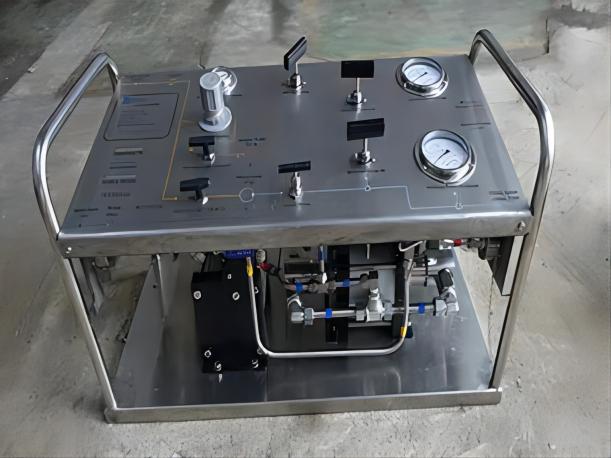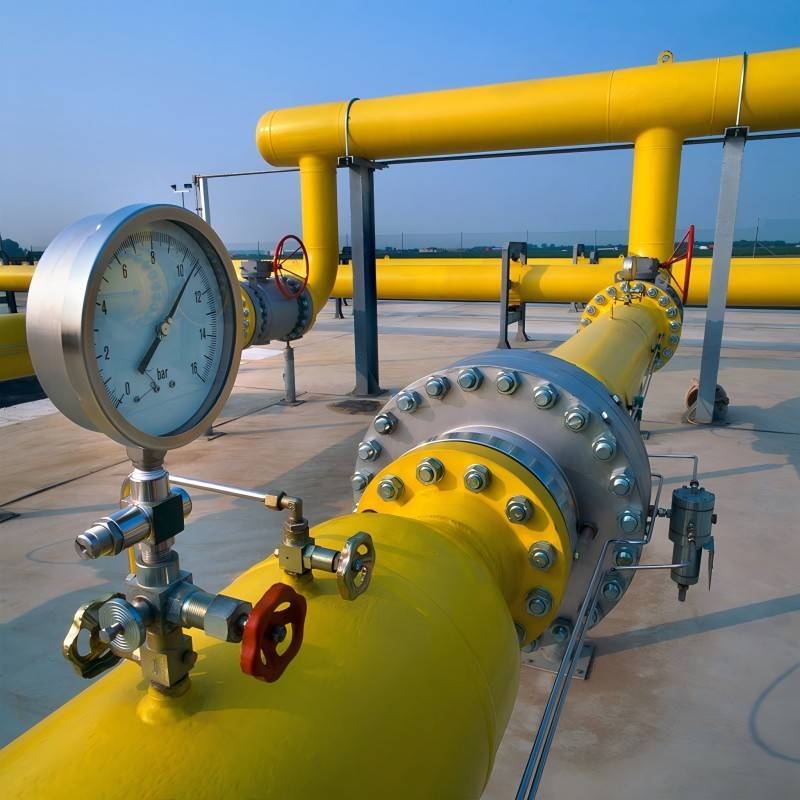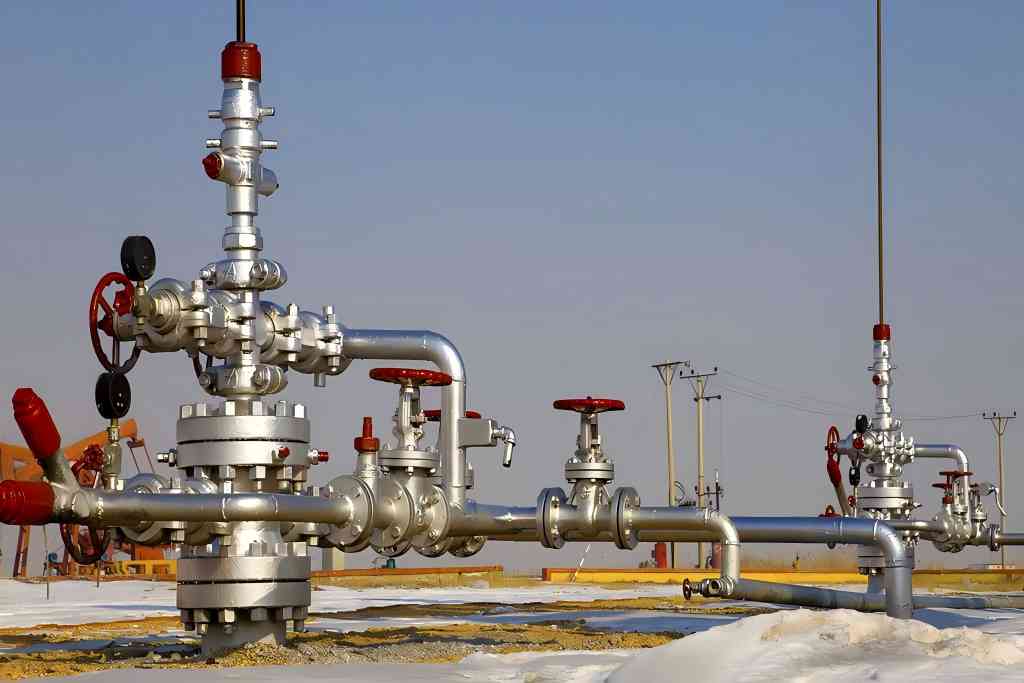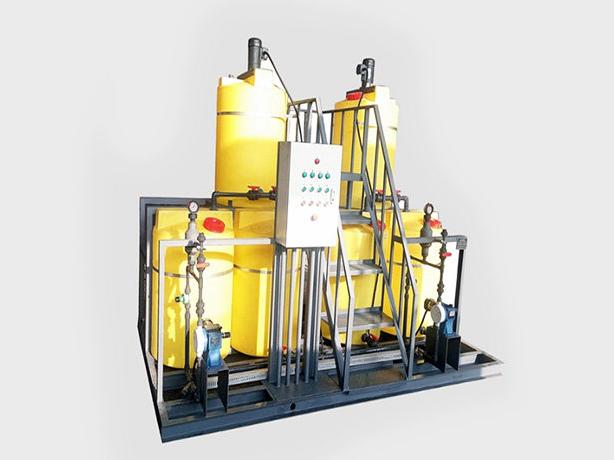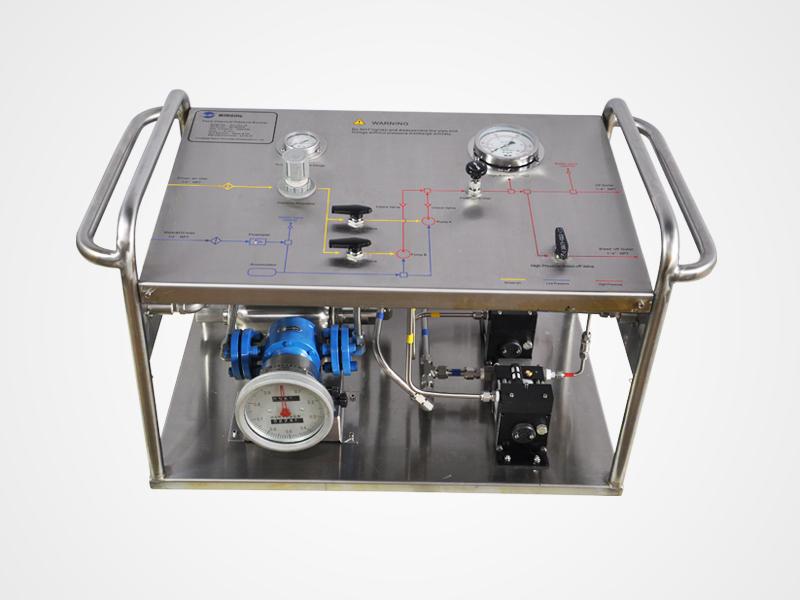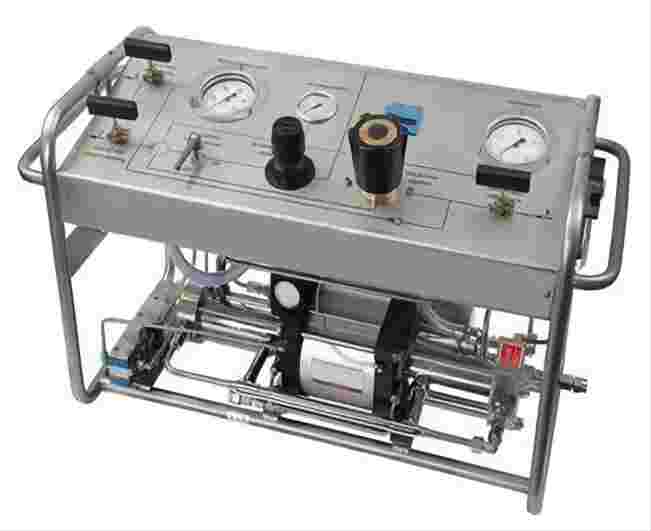A Guide to Hydrostatic Pressure Testing in the Gas and Oil Industry
The safe and efficient transportation of oil and gas relies heavily on the integrity of pipelines. These vital infrastructure components carry these resources across vast distances, and any failure can have catastrophic consequences for people, property, and the environment. Hydrostatic pressure testing plays a critical role in safeguarding pipeline integrity in the gas and oil industry. This article delves into the process, exploring the purpose of hydrostatic testing, the different types of pumps used, and crucial safety considerations.
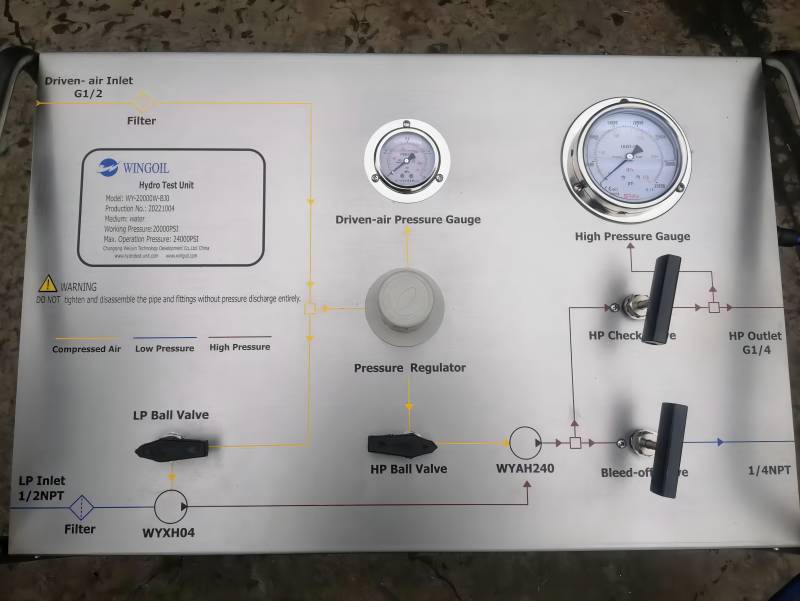
What is Hydrostatic Pressure Testing?
Hydrostatic pressure testing, also referred to as hydro testing, is a non-destructive testing method used to assess the strength and leak tightness of pressure vessels and piping systems. In the context of the gas and oil industry, it’s primarily employed for pipelines. The test involves filling a pipeline segment with a liquid, typically water, and pressurizing it to a predetermined level exceeding the maximum operating pressure. This pressurization helps to:
- Identify Leaks: Any leaks present in the pipeline will become evident during the test as water escapes from the pressurized system. Visual inspection and specialized leak detection equipment are used to pinpoint leaks for subsequent repair.
- Detect Weak Points: By subjecting the pipeline to a pressure exceeding normal operation, hydro testing can reveal potential weaknesses in the material or welds. These weaknesses, if left undetected, could lead to pipeline failures in the future.
Types of Hydrostatic PressureTest Pumps
The success of a hydrostatic pressure test hinges on the selection of an appropriate pump. Two main categories of hydrostatic test pumps are used in the gas and oil industry:
1. Manual Hydrostatic Test Pumps:
Manual hydrostatic test pumps are hand-operated devices that utilize a lever or handwheel mechanism to generate pressure. They are suitable for situations where lower pressure testing is required, typically for smaller diameter pipelines or pressure vessels.
Advantages:
- Portable: Due to their compact size and lack of reliance on external power sources, manual pumps offer excellent portability. This makes them ideal for testing pipelines in remote locations or areas with limited access to electricity.
- Economical: Manual pumps are generally less expensive compared to their electric counterparts. This cost-effectiveness can be beneficial for smaller-scale testing projects or when budget constraints exist.
Disadvantages:
- Limited Pressure Output: Manual pumps are inherently limited in the maximum pressure they can generate. This restricts their use to pipelines designed for lower operating pressures.
- Requires Physical Effort: Operating a manual pump requires sustained physical exertion, which can be challenging and tiring, especially for extended testing durations.
2. Electric Hydrostatic Test Pumps:
Electric hydrostatic test pumps utilize an electric motor to drive a pump mechanism, generating significantly higher pressure outputs compared to manual pumps. These pumps are employed for testing pipelines designed for higher operating pressures.
Advantages:
- Higher Pressure Output: Electric pumps can generate the higher pressures often encountered in larger diameter, high-pressure pipelines used in the gas and oil industry.
- Less Physical Effort: The electric motor eliminates the need for manual exertion, reducing operator fatigue and allowing for longer testing durations.
Disadvantages:
- Less Portable: Electric pumps typically require an external power source, limiting their portability compared to manual pumps. They might not be suitable for testing in remote locations without access to electricity.
- Cost: Electric pumps generally have a higher initial cost compared to manual pumps.
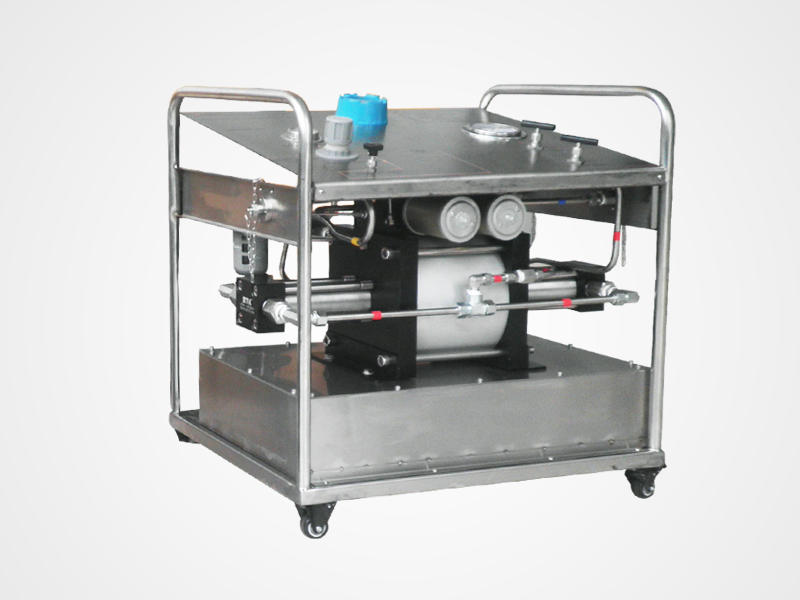
Choosing the Right Hydrostatic Test Pump
Selecting the most suitable hydrostatic test pump for a particular application in the gas and oil industry necessitates careful consideration of several factors:
- Pressure Requirements of the Pipeline: The chosen pump must be capable of generating a pressure exceeding the maximum operating pressure of the pipeline being tested. This ensures a thorough evaluation of the pipeline’s strength and leak tightness.
- Volume of Fluid Needed for the Test: The volume of water required to fill the pipeline segment being tested will influence the pump selection. Electric pumps with larger capacities are better suited for extensive pipeline sections, while manual pumps can suffice for smaller segments.
- Portability and Accessibility Requirements: The location and accessibility of the pipeline segment undergoing testing will influence the pump choice. Manual pumps offer superior portability for remote locations, while electric pumps might be suitable if access to electricity is available.
- Cost Considerations: Balancing the budget constraints of the project with the required pump capabilities is crucial. Manual pumps provide a cost-effective option for low-pressure testing, while electric pumps offer higher pressure capabilities but come at a higher initial cost.
Safety Procedures for Hydrostatic Pressure Testing
Hydrostatic pressure testing involves pressurizing pipelines to a significant degree. Therefore, adhering to strict safety protocols is paramount to ensure the safety of personnel and the environment. Here are some key safety considerations:
1. Pre-Test Preparations:
- Isolation: The pipeline segment to be tested must be effectively isolated from the operational pipeline system. This involves installing blinds or flanges at both ends of the test section to prevent any unintended flow of oil or gas into the test area.
- Venting: All air pockets within the pipeline segment must be meticulously vented to prevent air compression during pressurization, which can lead to inaccurate test results and potential safety hazards. Vent points should be strategically located at high points in the pipeline.
- Personnel Training: All personnel involved in the hydrostatic pressure testing operation must undergo comprehensive training. This training should cover safety procedures, proper use of testing equipment, emergency response protocols, and potential hazards associated with the testing process.
2. During the Test:
- Pressure Monitoring: Continuous monitoring of the pressure throughout the test is essential. Pressure gauges with appropriate pressure ranges should be installed at designated points along the pipeline to ensure the test pressure is maintained and doesn’t exceed the predetermined safe limit.
- Leak Detection: Throughout the pressurization process, the pipeline segment should be meticulously inspected for leaks. Visual inspection is a primary method, but specialized leak detection equipment can also be employed to pinpoint even small leaks that might not be readily visible.
3. Post-Test Procedures:
- Depressurization: Once the test is complete, the pressure in the pipeline must be gradually and carefully released in a controlled manner. Rapid depressurization can cause rapid contraction of the pipeline and pose safety risks.
- Disposal of Test Fluid: The water used for the test must be disposed of responsibly in accordance with all environmental regulations. This might involve filtering the water to remove any contaminants introduced during the testing process.
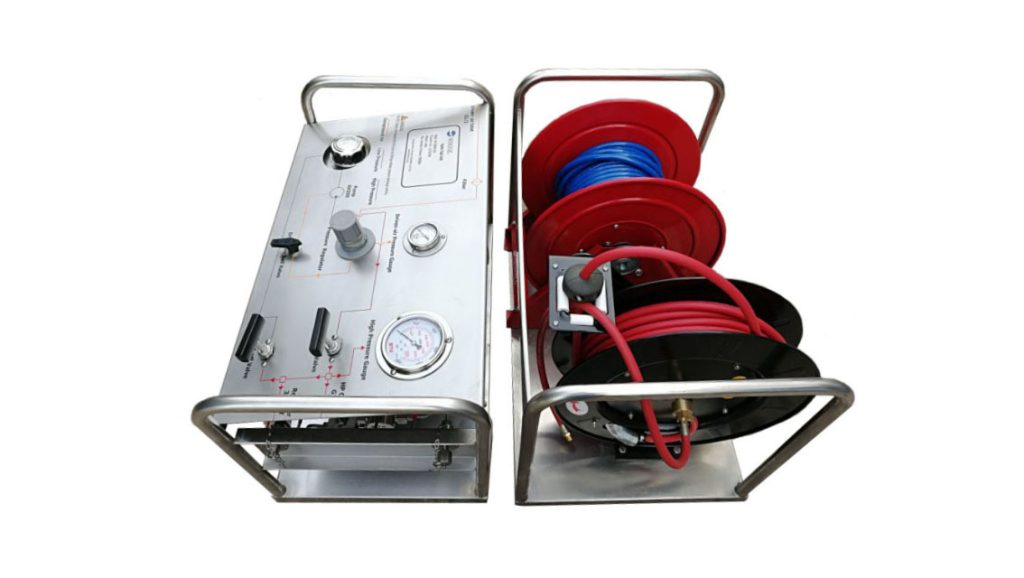
Conclusion
Hydrostatic pressure testing serves as a vital tool in the gas and oil industry to safeguard pipeline integrity. By subjecting pipelines to a controlled pressure exceeding their normal operating pressure, leaks, and potential weak points can be identified and addressed before they lead to catastrophic failures. Selecting the appropriate hydrostatic test pump, whether manual or electric, depends on the specific requirements of the testing project. Rigorous adherence to safety protocols during pre-test preparations, the testing process itself, and post-test procedures ensure the safety of personnel and the environment. Through a commitment to comprehensive testing and unwavering safety practices, the gas and oil industry can ensure the reliable and secure transportation of these critical resources.

